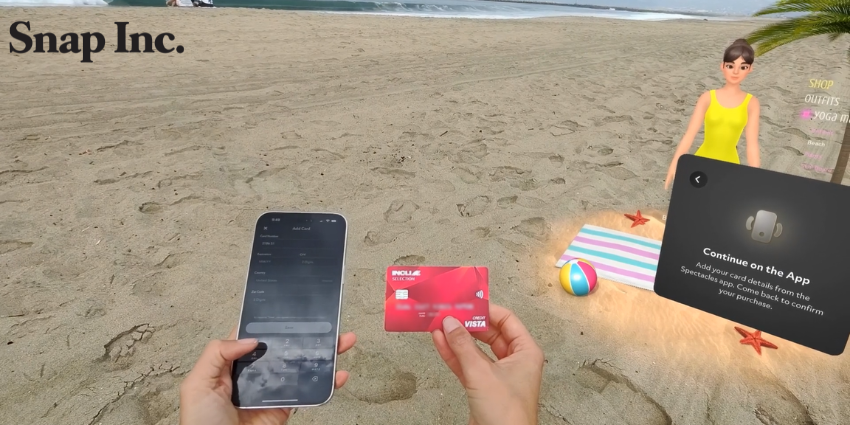Perhaps the most popular and accessible form of extended reality right now, AR (Augmented Reality) is growing at an exceptional rate.
With countless AR applications appearing on smartphones, and numerous companies investing in augmented experiences for brand/consumer interaction, the demand for AR will only continue to grow. According to Grandview Research, the market for AR will be worth a phenomenal $340.16 billion by 2028.
Although it’s difficult to know for certain what the future of Augmented Reality might bring, particularly when the industry is moving so rapidly, we can see a few potential trends on the horizon. Here are some of the Augmented Reality trends you should be aware of in 2022.
AR Smart Glasses Evolve
Smart glasses with AR technology have been an emerging part of the extended reality landscape for a few years now. Touted as the next evolution in wearable technology, these solutions provide users with a way to conveniently merge the real and digital worlds, hands-free.
Though a number of AR smart glasses have appeared over the years, the concept hasn’t taken the world by storm up to now. However, this could be about to change.
Throughout 2021, companies like Google, Apple, and Meta (Facebook) all began talking about their upcoming smart glasses releases, designed to be sleeker and more effective than ever.
The changes to the workplace imposed by the pandemic will likely have a significant influence on the increasing demand for these tools. There’s plenty of evidence that engineers and manufacturing will benefit from smart glasses to access hands-free information on the job, without needing a specialist standing over their shoulder.
Enhanced Eye and Hand Tracking
Enhanced eye and hand tracking in the AR landscape is part of what’s driving the evolution of AR, to full mixed reality. Apple recently applied for a patent in the XR landscape which will allow users to access information and interact with a menu by touching certain spaces on their wrist. Of course, there’s plenty of scope for what effective eye and hand-tracking in the AR environment can do.
Updated processing systems in smart glasses, headsets, and even augmented reality apps, will allow users to interact with the digital content in their world more effectively than ever before. Hand tracking is already available on devices like the Microsoft HoloLens 2 and Magic leap 1.
Eye tracking, on the other hand, will make it easier to improve the overall comfort of the AR experience for head-set users, reducing lag. It could also be vital in ensuring AR software focuses the most bandwidth and performance speed on the spaces the user is looking at, preserving power.
Improvements to Visuals and Audio
For AR smart glasses and headsets to become more of a mainstream investment, vendors need to ensure they’re delivering the best possible visuals, and the most realistic immersive experiences.
Today’s augmented reality experts are working hard to make the displays on your smart glasses as slick and seamless as possible. The best designs need to be wonderfully lightweight, while still delivering a completely realistic set of digital images.
Development in screen technology will help to power a new generation of smart headsets and glasses, while companies also explore other ways to boost immersion.
For instance, spatial audio isn’t just a concept worth considering in virtual reality. Adding spatial audio experiences to an AR environment can help to enhance the experiences of users too. For instance, a set of spatial speakers can make you feel like your colleagues are standing next to you as they talk you through how to do something with a new piece of tech.
As companies continue to experiment with the growing idea of the metaverse, enhanced visual and audio experiences could be the key to making us feel as though we’re more actively involved in the digital world and the real world at the same time.
Enhanced Retail Experiences
As Augmented Reality continues to become more accessible to the masses, it will also play a significant role in the way companies and customers interact.
Now that the majority of businesses have had to reduce the number of face-to-face interactions they have with their customers, AR could be the key to creating more immersive experiences in the digital world.
We’ve already seen an influx of new AR apps in the retail environment built for things like virtual events, where people can interact with products safely, from a distance, or virtual try-on sessions.
AR can also offer improved customer experiences in the form of enhanced user manuals, designed to intelligently guide a customer through the process of setting up a purchase without asking them to read a complex document.
In the future physical environment, AR can also help with things like wayfinding and navigating customers around a store without the need for human assistance. This could help to improve the overall efficiency of retail experiences.
AR and NFTs
NFTs, or Non-Fungible Tokens, have grown to be increasingly compelling offerings for many businesses in the last year or so. These tokens, similar to cryptocurrencies, offer people a way to get involved with communities, and invest in non-traditional assets.
The rise of digital transformation, metaverse technology, and the growing demand for non-fiat currencies is pushing the growth of NFTs to exceptional levels. The landscape also has a direct link with AR.
Many of the NFTs available on the market today are visual assets, or virtual experiences. Several AR games already exist where there are NFTs users can access specifically to leverage unique features within the game.
There’s a good chance we’ll see a rise in the number of AR-driven NFT experiences in the years ahead, as the investment in this landscape continues to grow.







